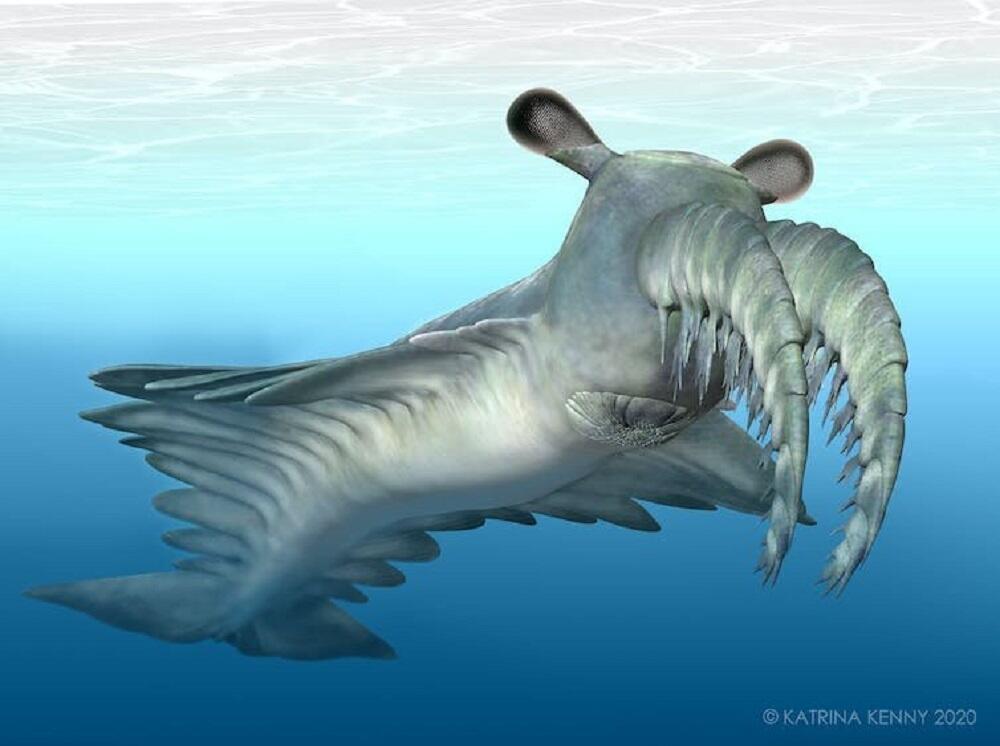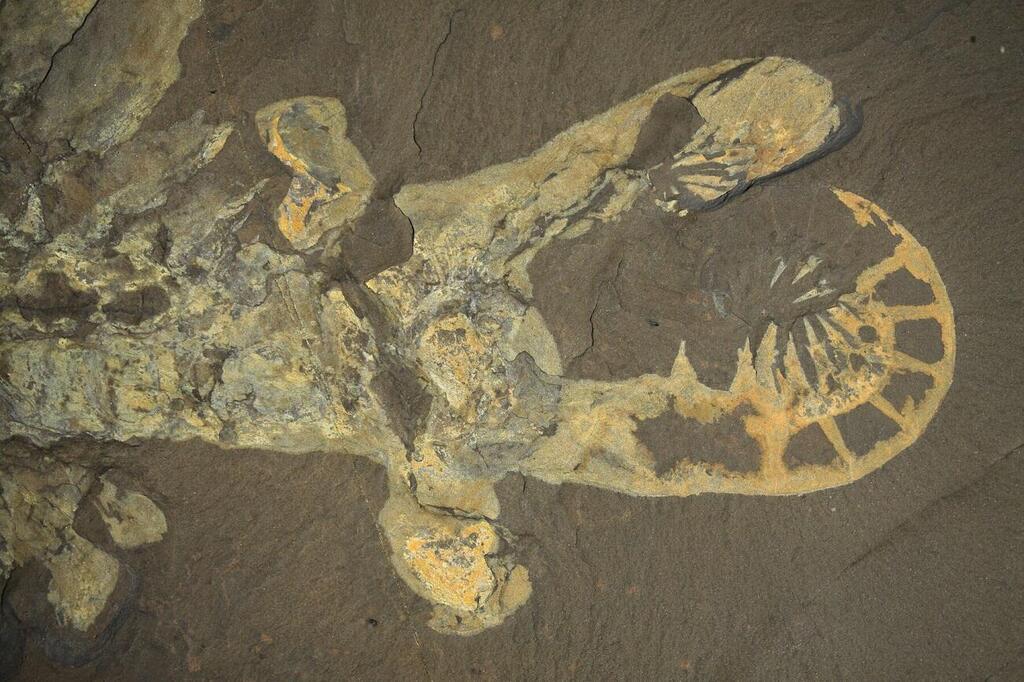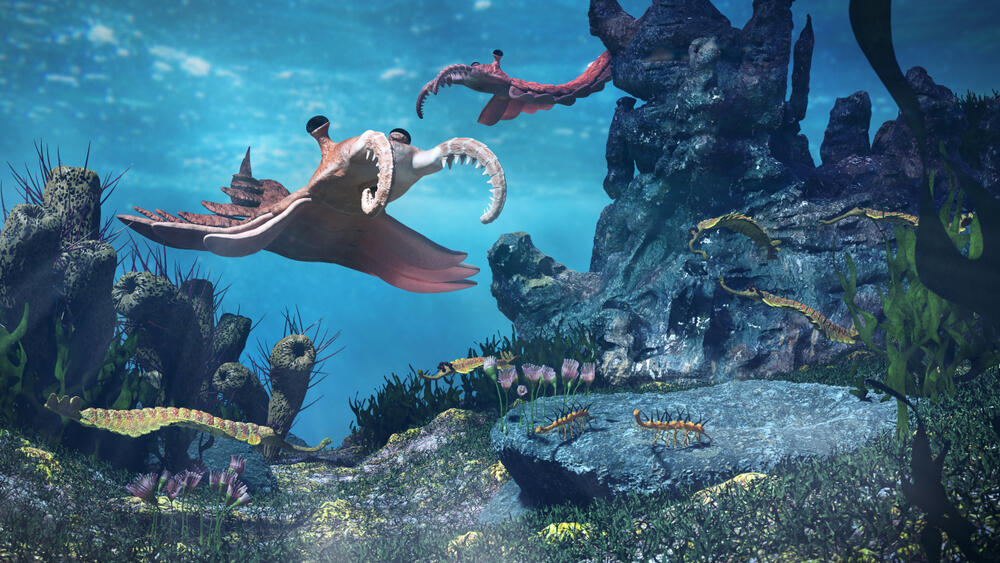Getting your Trinity Audio player ready...
The Anomalocaris Canadensis, an ancient arthropod from the Cambrian period which lived around 501-530 million years ago, was very different from what was previously believed.
More stories:
A recent biomechanical study of the sensory abilities of what is likely the world's first apex predator showed that this marine creature, measuring about 60 cm in length, was weaker than assumed. Therefore, it would not have been able to prey on hard-bodied organisms.
Anomalocaris Canadensis lived some 501-530 million years ago. It was one of the largest creatures of its time and was likely fast and agile, contributing to its ability to chase soft prey in open waters, rather than pursuing hard-shelled organisms at the bottom of the ocean.
The study’s findings, published in the Proceedings of the Royal Society B journal, seemed to have resolved a long-standing dispute among researchers regarding the diet of this early marine predator, first discovered in the late 19th century.
The name Anomalocaris means "abnormal shrimp," and the second part of its name, Canadensis, is derived from its discovery in the Burgess Shale, a geological formation exposed in the Canadian Rockies of British Columbia. It is famous for its amazingly preserved soft tissues from the Cambrian period, making it one of the oldest fossil-bearing rock layers with soft-bodied imprints.
Researchers argued about this ancient marine creature's diet. Some considered it a predator of hard-shelled organisms like trilobites, which were common during its time and had tough exoskeletons and it was thought to be responsible for some of the scattered remains of trilobites found in other fossils nearby. Others believed it fed on soft-bodied organisms.
“Trilobites have a very strong exoskeleton, while this animal would have mostly been soft and squishy,” explained Dr. Russell Bicknell, a researcher from the Division of Paleontology at the American Museum of Natural History in New York, who led the study on behalf of the University of New England in Armidale, Australia.
Scientists examined the Anomalocaris Canadensis’ mouthparts and cast doubt on its ability to process hard food. The research aimed to determine whether its large, spiked appendages located at the front of its head - which it used to explore its surroundings similar to the arms of a mantis - could perform the task instead.
The team, composed of scientists from Germany, China, Switzerland, Britain, and Australia, first opted to reconstruct a 3D model of Anomalocaris Canadensis based on the remarkably preserved, though fragile, fossils from the Burgess Shale, where most of the fossils date back to around 508 million years ago.
By using modern whip scorpions and amblypygi as biomechanical models, the researchers demonstrated that the apex predator’s spiked appendages were capable of capturing prey through flexible movements by stretching and bending. They illustrated the points where pressure was applied during the capturing of prey, demonstrating how the Anomalocaris Canadensis could have been injured if it attempted to catch hard-bodied prey like trilobites. This contradicted earlier assumptions by some researchers who believed the apex predator swam toward its prey at incredible speeds and opened its mouthpieces to capture and eat it.
“Previous conceptions were that these animals would have seen the Burgess Shale fauna as a smorgasbord, going after anything they wanted to, but we’re finding that the dynamics of the Cambrian food webs were likely much more complex than we once thought,” Dr. Bicknell said.




